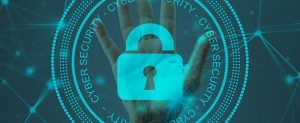Quantum News Briefs July 4: Israel’s Quantum Source Emerges from Stealth & Secures $15 Million Seed Funding, Quantum Computing, Cloud Computing & AI Together Will “Secure Cyberspace”, When Quantum Particles (and stock markets) Fly Like Bees, and MORE

Quantum News Briefs opens today with the announcement of a $15M funding for Israel’s Quantum Source for development of its large-scale photonic quantum computers, followed by a brief outlining how AI, cloud computing and quantum computing will together “secure cyberspace.” The Briefs moves to a thoughtful piece by Classiq’s CTO Dr. Yehuda Naveh who discusses the strategic nature of quantum computing at the corporate and country levels. Nature lovers will appreciate the brief from Munich’s Quantum Valley “When Quantum Particles Fly Like Bees” and MORE.
*****
Israel’s Quantum Source Emerges from Stealth & Secures $15 Million Seed Funding
Quantum Source (QS), an Israel-based quantum computing company is coming out of stealth mode with a $15 million seed funding round co-led by Grove Ventures, Pitango First, and Eclipse Ventures.
The company was founded by three serial entrepreneurs and a Professor from the Weizmann Institute of Science: Oded Melamed, CEO, who was the co-founder and CEO of Altair Semiconductor acquired by Sony; Gil Semo, VP R&D, who was among the founding team of Anobit Technologies acquired by Apple, who later became the Director of Platform Architecture at Apple in Israel; Dan Charash, Chairman, who was the co-founder and CEO of Provigent acquired by Broadcom; and Prof. Barak Dayan, Senior Scientist and founder and head of the Quantum Optics lab at the Weizmann Institute of Science. The company employs twenty-five physicists and engineers, fifteen of whom hold PhD degrees.
Quantum Source’s vision is to enable scaling quantum computers to millions of qubits with its breakthrough photonic technology. Large-scale photonic quantum computers are expected to instigate a revolution in entire industries. These quantum computers will accelerate, for instance, the development of new drugs, shorten the time pharma companies can introduce new medicines to the market, and support physicians with treatment optimization for complex diseases.
*****
How Quantum Computing, Cloud Computing & AI Together Will “Secure Cyberspace”
 Although quantum computing is considered, a threat to cybersecurity if capitalized in the right manner it could be a catalyst for ensuring better security with disruptors like AI. Analytics Insight provides a list as to how quantum computing, cloud computing and AI together will “secure cyberspace”.
Although quantum computing is considered, a threat to cybersecurity if capitalized in the right manner it could be a catalyst for ensuring better security with disruptors like AI. Analytics Insight provides a list as to how quantum computing, cloud computing and AI together will “secure cyberspace”.
- AI improves the rate of threat detection with minimal errors.
- Quantum computing will enable quantum key distribution (QKD) by sharing the cryptographic codes between the users and ensuring complete safety and flagging unwanted intrusions.
- To eliminate the threat posed by quantum computing in exposing encryptions, there are studies going on to develop quantum-safe encryption.
- AI can be leveraged to monitor network security and data centers to alert any discrepancies and act on the vulnerabilities by understanding their roots.
- Quantum machine learning can enhance the pace of developing algorithms that can improve cybersecurity measures.
*****
Quantum Is Strategic To Companies And Countries
 Dr. Yehuda Naveh, co-founder and CTO of Classiq is the author of a recent Forbes Tech Council article discussing the need to understand the strategic nature of quantum computing and not focus only on the technical level. Quantum News Briefs summarizes, Dr. Naveh’s complete essay worth the time to read.
Dr. Yehuda Naveh, co-founder and CTO of Classiq is the author of a recent Forbes Tech Council article discussing the need to understand the strategic nature of quantum computing and not focus only on the technical level. Quantum News Briefs summarizes, Dr. Naveh’s complete essay worth the time to read.
Quantum computing will have a profound impact on financial services, logistics, transportation, aerospace and automotive, materials science, energy, agriculture, pharmaceuticals and healthcare, and cybersecurity. All of these areas are strategic on macroeconomic and national security scales. Breakthroughs on these fronts are even more important at a time in which nations reduce cooperation with each other and are engaged in fierce competition and sometimes hostile conflicts.
A paper from the National Security Commission on Artificial Intelligence, chaired by Eric Schmidt, emphasizes how profoundly AI and technologies such as quantum computing will impact our economy, national security and welfare. The paper, which mentions quantum nearly 150 times, urges the U.S. to “develop a single, authoritative list of the technologies that will underpin national competitiveness in the 21st century” and “take bold action to catalyze U.S. leadership” in these areas.
Whether you are in the public or private sector, getting started in quantum computing will require you to make investments of time and money in software and talent. In return, your quantum efforts will enable you to prepare and adapt the use of quantum technology. If quantum is the game changer that many leading academic institutions, companies, countries and technologists believe it to be, you will be better positioned to compete.
Centuries of basic and applied research have taught us that investment in technology always reaps its benefits, whether it’s intended or unexpected. A substantially new way of thinking results in substantially new insights into the business challenges and their technical solutions. And clearly, on the upside, the power that quantum computing delivers will enable prepared public and private entities to provide rapid solutions to previously unsolvable problems.
*****
When Quantum Particles Fly Like Bees
 Simulating the dynamics of a complex quantum system is a very hard problem even for today’s super computers, but the task is a piece of cake for quantum simulators. But how are you supposed to check the results of a quantum simulator when you cannot recalculate them? Theoretical predictions suggested that it might be possible to represent at least the long-term behavior of such systems with equations as those developed by the Bernoulli brothers in the 18th century to describe the behavior of fluids.
Simulating the dynamics of a complex quantum system is a very hard problem even for today’s super computers, but the task is a piece of cake for quantum simulators. But how are you supposed to check the results of a quantum simulator when you cannot recalculate them? Theoretical predictions suggested that it might be possible to represent at least the long-term behavior of such systems with equations as those developed by the Bernoulli brothers in the 18th century to describe the behavior of fluids.
To test this hypothesis, a research team from Munich Quantum Valley and the Institute for Quantum Optics and Quantum Information (IQOQI) of the Austrian Academy of Sciences at the University of Innsbruck used a quantum system that simulates the dynamics of quantum magnets. “With this they were able to show that after an initial regime in which quantum-mechanical effects dominate, the system can be described by equations known from fluid dynamics”.
At first glance, a system consisting of 51 ions may appear simple. But even if these charged atoms can only assume two different states, there will be more than two quadrillion (10^15) different configurations which the system can realize. The behavior of such a system can therefore hardly be calculated with conventional computers. Especially since once an excitation has been introduced into the system, it can propagate in leaps and bounds. It follows a statistic known as Lévy flight.
A characteristic of the movement of such a quantum particle is that, in addition to the smaller jumps, also significantly larger jumps occur. This phenomenon can also be observed in the flight of bees and in unusual fierce movements in the stock market.
*****
Sandra K. Helsel, Ph.D. has been researching and reporting on frontier technologies since 1990. She has her Ph.D. from the University of Arizona.






















